
Medley swimming is a combination of four different swimming strokes into one race. This race is either swum by one swimmer as individual medley (IM) or by four swimmers as a medley relay.
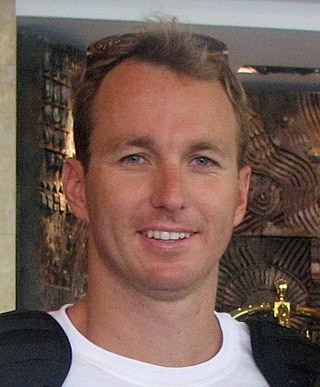
The men's 200 metre backstroke event at the 2004 Olympic Games was contested at the Olympic Aquatic Centre of the Athens Olympic Sports Complex in Athens, Greece on August 18 and 19. There were 36 competitors from 30 nations. Each nation had been limited to two swimmers in the event since 1984.

The men's 200 metre backstroke event at the 1996 Summer Olympics took place on 26 July at the Georgia Tech Campus Recreation Center in Atlanta, United States. There were 39 competitors from 33 nations. Each nation had been limited to two swimmers in the event since 1984. The event was won by Brad Bridgewater of the United States, with his countryman Tripp Schwenk taking silver. It was the first time since 1980 that one nation had two swimmers on the podium in the event. Bridgewater's victory was the United States' first in the event since 1984 and fourth overall. Italy earned its second consecutive bronze medal in the men's 200 metre backstroke, with Emanuele Merisi taking the honours this time.

The men's 200 metre backstroke event at the 2000 Summer Olympics took place on 20–21 September at the Sydney Olympic Park Aquatic Centre in Sydney, Australia. There were 45 competitors from 38 nations. Each nation had been limited to two swimmers in the event since 1984. The event was won by Lenny Krayzelburg of the United States, with his countryman Aaron Peirsol taking silver. It was the second consecutive Games that Americans had finished one-two in the event. Bronze went to Matt Welsh of Australia, the nation's first medal in the event since 1980.

The men's 200 metre backstroke event at the 1984 Summer Olympics was held in the Uytengsu Aquatics Center in Los Angeles on July 31, 1984. There were 34 competitors from 25 nations, with each nation limited to two swimmers. The event was won by Rick Carey of the United States, the nation's third victory in the men's 200 metre backstroke. Frédéric Delcourt of France took silver and Cameron Henning of Canada earned bronze; it was the first medal in the event for each of those two nations.
The women's 100 metre backstroke event at the 1956 Olympic Games took place on 5 December. This swimming event used backstroke. Twenty-three swimmers from 14 countries competed in this swimming event. Because an Olympic-size swimming pool is 50 metres long, this race consisted of two lengths of the pool. This was the seventh time that there had been the women's 100-metre backstroke after its debut in the 1924 Paris Olympics.
The women's 100 metre backstroke event at the 1968 Olympic Games took place between 22 and 23 October. This swimming event used backstroke. Because an Olympic-size swimming pool is 50 metres long, this race consisted of two lengths of the pool.
The men's 100 metre backstroke event at the 1972 Olympic Games took place between August 28 and 29. This swimming event used backstroke. Because an Olympic-size swimming pool is 50 metres long, this race consisted of two lengths of the pool.
The women's 100 metre freestyle event at the 1972 Olympic Games took place between August 28 and 29. This swimming event used freestyle swimming, which means that the method of the stroke is not regulated. Nearly all swimmers use the front crawl or a variant of that stroke. Because an Olympic size swimming pool is 50 metres long, this race consisted of two lengths of the pool.
The women's 200 metre backstroke event at the 1972 Olympic Games took place September 4. This swimming event used backstroke. Because an Olympic-size swimming pool is 50 metres long, this race consisted of four lengths of the pool.
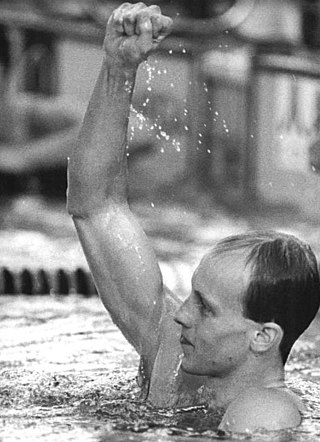
The men's 200 metre backstroke event at the 1988 Summer Olympics took place on 22 September at the Jamsil Indoor Swimming Pool in Seoul, South Korea. There were 44 competitors from 32 nations. Each nation had been limited to two swimmers in the event since 1984. The event was won by Igor Polyansky of the Soviet Union. Frank Baltrusch of East Germany took silver, while Paul Kingsman of New Zealand earned bronze. The medals were the first in the men's 200 metre backstroke for the Soviet Union and New Zealand; East Germany had not medaled in the event since Roland Matthes won gold in 1968 and 1972. For the first time, the United States competed and did not earn at least silver.
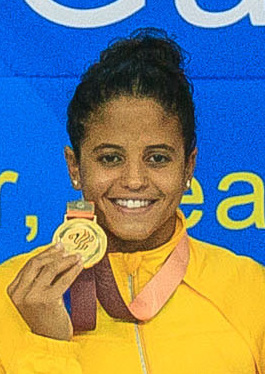
Etiene Pires de Medeiros is a Brazilian competitive swimmer who participates in backstroke and freestyle events. Widely regarded as the best Brazilian woman swimmer of all time, Medeiros was the first Brazilian to win an individual gold medal in a World Championship and Pan American Games, and the first to be a world record-holder in the modern era
Apostolos Christou is a Greek swimmer specializing in backstroke. He is the Greek National Record holder in the 100 metre freestyle and 50, 100, and 200 metre backstroke events, as well as contributing to national record efforts in the 4x100 metre freestyle and medley relays. He is a three-time Olympian, qualifying in 2016, 2021, and most recently 2024, where he became Greece's first Olympic medalist in swimming since the inaugural 1896 Games through his 2nd place finish in the 200 metre backstroke.

Evgeny Mikhailovich Rylov is a Russian competitive swimmer and Olympic champion specializing in backstroke events. He won three gold medals at the 2014 Summer Youth Olympics in Nanjing, and a bronze medal at his senior international debut at the 2015 World Championships in Kazan. He also won a bronze medal at the 2016 Summer Olympics in Rio de Janeiro and a gold medal at the 2017 World Championships in Budapest, both were in the 200 metre backstroke event. In 2018, at the 2018 World Short Course Championships, he won gold medals in the 200 metre backstroke and 50 metre backstroke. At the 2019 World Championships, he won a gold medal in the 200 metre backstroke, silver medal in the 100 metre backstroke, and silver medal in the 50 metre backstroke. He won the gold medal in the 100 metre backstroke and 200 metre backstroke at the 2020 Summer Olympics in Tokyo.
Taylor Madison Ruck is a Canadian competitive swimmer. She won two Olympic bronze medals as part of Canada's women's 4×100 metre and 4×200 metre freestyle relay teams at the 2016 Summer Olympics in Rio de Janeiro. Ruck won eight medals at the 2018 Commonwealth Games in Gold Coast, Australia. Her eight medal performance of one gold, five silver, and two bronze tied her with three other athletes for the most all-time at a single Commonwealth Games, as well as making her the most decorated Canadian female athlete ever at a single Commonwealth Games. Ruck is the all-time leading medallist at the FINA World Junior Swimming Championships having won nine gold, two silver, and two bronze over the course of the 2015 and 2017 editions.
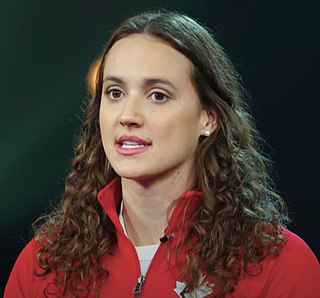
Kylie Jacqueline Masse is a Canadian competitive swimmer. A noted backstroke specialist, she is a five-time Olympic medallist, three-time World Aquatics champion, three-time Commonwealth Games gold medallist, and the 2018 Pan Pacific champion in the 100 metre backstroke. She is currently the captain for the Toronto Titans of the International Swimming League.
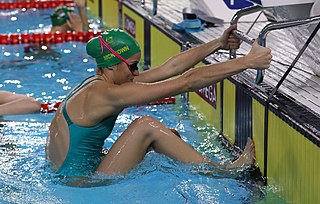
Kaylee Rochelle McKeown is an Australian swimmer and quintuple Olympic gold medalist. She is the reigning Olympic champion in the 100 and 200 metres backstroke. She is the world record holder in the long course 50 metre backstroke and the long course 200 metre backstroke, and formerly in the 100 metre backstroke and 200 metre backstroke. She won gold in both the 100 metre and 200 metre backstroke at both the 2020 and 2024 Olympics. In 2023, she was named as the "Best Female Swimmer of the Year" by World Aquatics, after sweeping gold in all three events of backstroke at all three World Cup legs, held in Berlin, Athens and Budapest in October, 2023.
Rebecca Meder is a South African swimmer. She is the African record holder in the 100 metre individual medley and the South African record holder in the long course and short course 200 metre individual medley. At the 2022 World Short Course Championships, she placed sixth in the final of the 100 metre individual medley. In the 200 metre individual medley at the 2022 Commonwealth Games, she placed fourth in the final. At the 2021 African Championships, she won 11 gold medals, six in individual events and five in relay events, swimming on the finals relay for each of the five relay events.
Jimena Leguizamón Leal is a Colombian competitive swimmer. At the 2022 Bolivarian Games, she won gold medals in the 200 metre backstroke and 4×100 metre medley relay and bronze medals in the 200 metre individual medley and 100 metre backstroke. At the 2022 World Aquatics Championships, she placed sixteenth in the 200 metre backstroke and became the first female Colombian swimmer to reach the semifinals stage of competition in the event at a World Aquatics Championships. She won the silver medal in the 200 metre backstroke at the 2021 Junior Pan American Games and two gold medals and two silver medals in individual events at the 2022 South American Youth Games.










